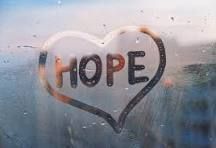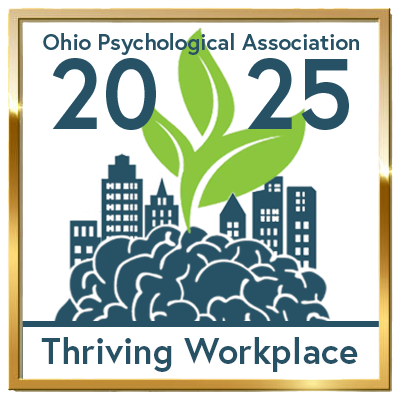Today’s generation of kids are responding differently to child rearing techniques used in previous generations. Decades ago, parents were unfamiliar with certain emotional and behavioral challenges that kids are facing today. Parents used phrases such as “toughen up,” “you’ll get through it,” “this will be a good learning experience,” and “if it was good enough for me, it is good enough for you,” which are not resonating with today’s generation. Whether this is because of the rise of helicopter parenting, social media or a number of other factors, the needs of the new generational youth can be hard to grasp by today’s adults.
Navigating school, making friends and hormonal changes have always been difficult for kids and parents handle – the rise in a child’s independence. Some of the current stressors kids and young adults are facing existed a generation ago -the pressure to produce high grades; participate in community service activities to enter college; and working part-time in high school. Today, additional stressors include state-mandated testing, social media, electronic devices and children moving between households can take their toll on youth and families. Factor in trying to balance social and extracurricular activities; life can be a lot to handle. You need to ask yourself if the problems your child is facing are indications of a deeper issue.
A couple common anxieties
Test anxiety is a common struggle for children today. Test anxiety can be experienced in a variety of ways – from physical symptoms which includes sweating, shaking, rapid heartbeat, dry mouth, fainting and nausea to behavioral issues such as fidgeting or outright avoidance of testing situations. When experiencing repeatedly or over prolonged periods of time, this can lead to depression, anger and low self-esteem.

Nail biting is an often-overlooked manifestation of anxiety. For some kids, nail biting is a way to relieve stress. For other kids, it might signal nervousness or a sign of boredom. In some cases, the need to engage in this behavior (and the discomfort felt when unable to do so) is so strong that it can be interpreted as a symptom of obsessive-compulsive disorder.

Emotional changes:
It is normal for every child to experience unpleasant feelings such as sadness, loss, disappointment, frustration and anger. Emotions may be experienced more intensely or may change more dramatically during certain developmental stages – such as the “terrible twos” or adolescence – as kids strive to figure out their personalities, the limits of their abilities and their roles in the world. Unpleasant emotions may also be triggered by difficult life events such as death of a grandparent or other loved one, the introduction of a new child into the family or moving from one housing situation to another.
Divorce and parental separation can be distressing experiences for children. Regardless of age, gender or culture, these changes have a deep and long-lasting impact on children. Younger children may wonder if mom and dad can stop loving each other, could they stop loving me too? Children of any age can feel rejected or abandoned and wonder if they are in some way responsible for the break up. They may exhibit anger, irritability, challenges to authority, withdrawal from close relationships or even panic attacks. As adolescents begin dating, they may be reluctant to trust or may doubt the possibility having love that lasts long-term. Studies have found that depression and anxiety occur at higher rates among children from divorced households.
Behavioral changes:
Sudden or dramatic changes in a child’s behavior may be signs of a bigger underlying problem. Changes in sleep, eating or hygiene habits can be indications that the child is feeling stressed, depressed or anxious. Unexplained weight loss or weight gain can also be linked to distress. Changes in social functioning such as withdrawal from friends and family, sudden lack of interest in activities that the child used to enjoy or suddenly hanging out with a whole different group of friends can be signs that the child is struggling.
Some behaviors, such as the inability to sit still, difficulty concentrating, increased irritability and forgetfulness are often interpreted as symptoms of ADHD. While it might be that the child has ADHD, this is not the only explanation for these behaviors. These might also be symptoms of anxiety or even attempts to cope with a traumatic experience.

How to find answers?
The simple solution is to see a mental health provider. Unfortunately, there is a lot of stigma associated with mental health care. Many parents are uncomfortable seeking mental health services because they are afraid they will be told there is something terribly wrong with their child or that they have failed as a parent. The reality is when a child is coughing and sneezing, parents do not hesitate to contact a pediatrician or visit a stat care. Parents should feel the same comfort in seeking professional care for their child’s mental health.
Here are a couple steps to consider before calling C&A:
- The first step is to speak with your child. Describe what you have noticed. Explain that you are concerned because you care. Ask the child to tell you what he/she has been experiencing and find out if he/she has a different explanation for those behaviors.
- Contact a few of their closest friends and see if they have noticed a change or can verify child’s explanation.
- Contact a teacher/school official to find out if they have noticed similar behaviors or had similar concerns at school.
C&A has many therapists and case managers who provide school-based services, which means they are able to work with children and adolescents at their schools. This can be particularly helpful if the child is having problems that interfere with academic functioning or experiencing difficulty in their interactions with peers or teachers. Additionally, many families find it convenient to have access to mental health services right there in their child’s school.
C&A also offers traditional office-based services at several locations throughout Stark County. Some children who are functioning well at school may not need to be seen at school. Some parents prefer to keep their child’s mental health services separate from school. For some issues, such as trauma, involve dealing with very uncomfortable experiences or intense feelings and it might be preferable not to do this at school.
If your child is seen at one of our offices, this experience will be a similar to a pediatrician (minus the long table) or dentist office (without the long relaxing chair) - where the child speaks freely revealing symptoms and the clinician/therapist provides techniques or skills to resolve the issue.
C&A is ready to assist your child and family in building lives filled with health, hope and happiness. C&A is simply a phone call away. We are here to assist resolving a child and/or family’s issues with convenient day and evening appointments. For more information, call 330-454-7917 or 330-433-6075.
RECENT POSTS












